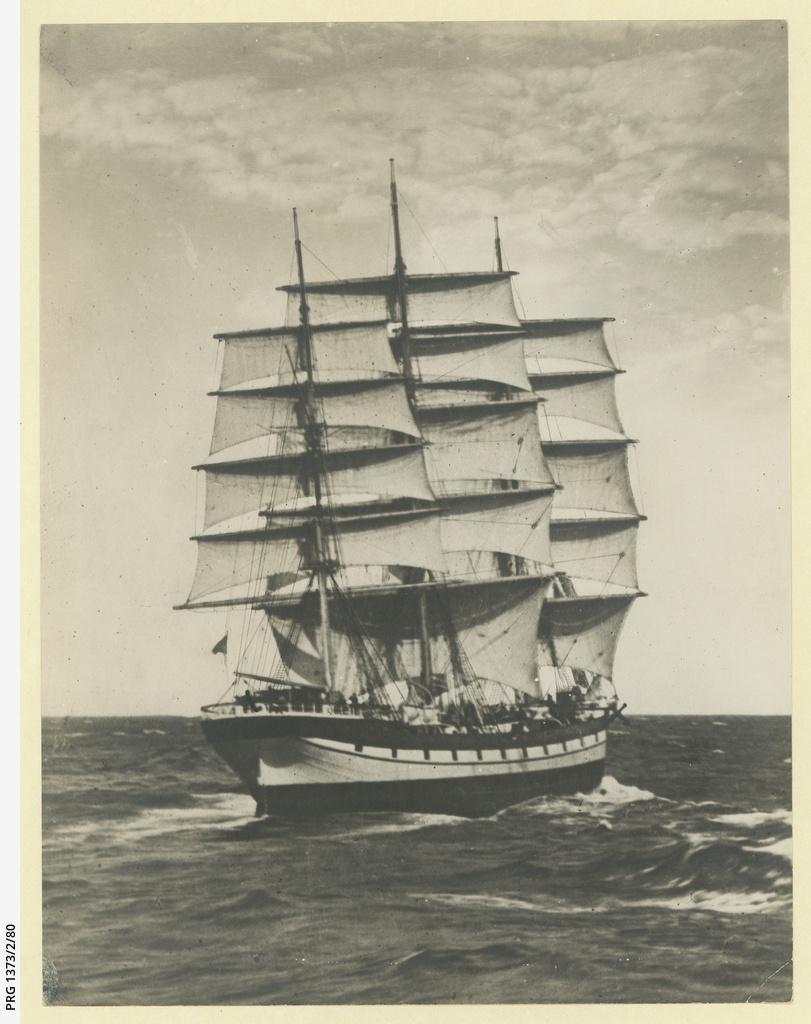 SS Fitzjames under full sail
SS Fitzjames under full sail
John Poulton was a Lancashire labourer who improved his life prospects by taking his wife and child to Australia when opportunity knocked. By doing so, they broke a cycle of worsening poverty and laid the foundations of a more comfortable life for their descendants.
Born on 25 March 1830, John was baptised the following day in St Mary's Catholic church at Fernyhalgh, Lancashire, about a mile from his parent's home in the tiny hamlet of Fulwood Row. His father, John Robert Poulton, had been baptised in the same church 45 years earlier. He was a cotton handloom weaver who supplemented his poor income with seasonal work as an agricultural labourer. His wife, Elizabeth Green, had already borne him ten children and they made it an even dozen three years later with the birth of John's younger brother William.
When her husband died in the following year, Elizabeth was left to raise 6 children aged under 13 years old. She would have relied heavily on her older children (aged from 16 to 26) for assistance. The family remained in the house at Fulwood Row with Elizabeth and all the children contributing to the weaving work that supplied their meagre income. In time Elizabeth also took on the running of a small farm of 3 acres, where her son John learned the work of an agricultural labourer. This enabled him to supplement the family's income through occasional work on larger farms nearby. When the 1851 census was taken, John was recorded as a 21-year-old farm labourer working on Siddle's farm, a couple of miles from his mother's place at Fulwood Row.
Later that same year, John's 32-year-old sister Ann married the widower who lived next door, Robert Clarkson, who had a 16-year-old daughter named Elizabeth among his six children. John Poulton and Elizabeth Clarkson were married three years later at nearby Preston.
John's mother Elizabeth died a few months later from bronchitis and was buried on 2 February 1855 at Broughton, near Preston.
John and Elizabeth Poulton's first child (Thomas) was born in September 1856 but died at just 3 months old. A second son, born two years later, was named for his father and grandfather. Soon afterwards the young couple was provided with an opportunity to emigrate to Australia where John was offered work as a labourer engaged in railway construction work. This offer came through John's sister Hannah who had married John Ashworth (a painter) eight years earlier. John worked with William Watson whose daughter Isabella had emigrated to Australia with her husband James Tattersall (a railway construction overseer) in 1857. The Tattersall's paid for both the Poulton and Ashworth families to emigrate to Australia. They sailed aboard the SS Fitzjames on 13 November 1859. Unfortunately, the Poulton's infant son John died on the voyage.
Within a few weeks of their arrival in Australia, the Poulton's third child was born at Redfern and baptised Alice Clarkson Poulton. She was to found a dynasty in western NSW - read more.
John and Elizabeth Poulton moved to Penrith in about 1863 when construction work began on the construction of the railway line west from Penrith and over the Blue Mountains. John worked on the construction of the Lapstone zig zag line and supplemented his income by taking in boarders and by grazing animals on a small plot of land, just as his mother had done back in Lancashire. He continued to work in railway construction, including the building of the Lithgow zig zag. He also tendered successfully for timber licenses at Paterson and Dungog.
John's wife Elizabeth left the family in about 1870. John and his daughter later moved to Coonamble where John purchased land and held a timber license. Alice, his daughter, married John Bowen there on 21 October 1878. My essay The Clan Keeper is about her.
John Poulton died at Coonamble hospital on 5 September 1887 from acute inflammation of both lungs. He was 57 years old. It seems likely that he had been a heavy smoker. He was buried in Coonamble cemetery the following day.
